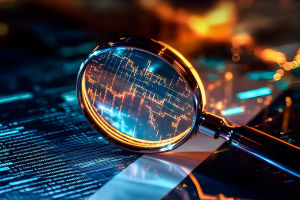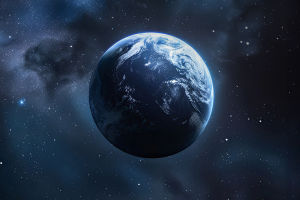Water is everywhere around us—in lakes, rivers, clouds, and even inside our bodies. But have you ever stopped to think about where it all comes from and where it goes?
Water on Earth is always moving in a giant loop called the water cycle. This natural process keeps water moving through different stages, making life possible.
Let's explore this fascinating cycle together.
What Is the Water Cycle?
The water cycle, also called the hydrologic cycle, is the continuous movement of water on, above, and below the surface of the Earth. It moves water through different forms—liquid, vapor, and ice—between the atmosphere, land, and oceans. This cycle has no beginning or end because it is constantly repeating.
Evaporation: Water Turns to Vapor
The cycle starts when the sun heats up water from oceans, lakes, rivers, and even wet soil. This heat causes water to change from liquid to a gas called water vapor. This process is called evaporation. Plants also release water vapor through their leaves in a process called transpiration. Together, these two steps are sometimes called evapotranspiration.
Condensation: Clouds Are Born
As the water vapor rises higher into the cooler air, it begins to cool down and change back into tiny water droplets. This change from vapor to liquid is called condensation. These droplets gather together to form clouds. Clouds are like floating water factories, holding millions of droplets.
Precipitation: Water Returns to Earth
When the droplets in clouds grow too big and heavy, they fall back to the Earth as precipitation. This can be rain, snow, sleet, or hail, depending on the temperature and conditions in the atmosphere. Precipitation is the way water returns to the ground, lakes, rivers, and oceans, completing a part of the cycle.
Collection: Water Finds Its Place
After precipitation, water collects in various places. Some water soaks into the soil and becomes groundwater, stored in spaces underground. Some water flows over the surface as runoff, heading toward streams, rivers, and eventually back to oceans or lakes. This collection is important because it supplies fresh water for plants, animals, and people.
The Role of Groundwater
Groundwater is a hidden part of the water cycle. It moves slowly beneath the surface and can stay underground for years or even centuries. Wells tap into groundwater to provide drinking water for many communities. Groundwater also feeds springs and rivers, helping keep ecosystems alive during dry times.
Why Is the Water Cycle Important?
The water cycle is crucial for life on Earth. It distributes fresh water across the planet, supports agriculture, maintains habitats for wildlife, and influences weather and climate. Without this cycle, water would not renew itself, and life as we know it would struggle to survive.
Human Impact on the Water Cycle
People can affect the water cycle in many ways. Deforestation reduces the amount of water plants release into the air, changing evaporation rates. Pollution can harm water sources, making the cycle less healthy. Climate change is also altering precipitation patterns, causing droughts or floods in some areas.
Protecting Our Water Cycle
Understanding the water cycle helps us see why protecting water sources matters. Conserving forests, reducing pollution, and using water wisely can all help keep the water cycle working well. Every drop counts, so simple actions like fixing leaks or planting trees support this vital process.
Final Thoughts
Next time you see rain falling or steam rising from a lake, remember you are watching a part of a huge, ongoing journey—Earth's water cycle. This amazing natural system connects the land, air, and life itself. How do you think you can help protect this cycle in your daily life? Share your thoughts!


